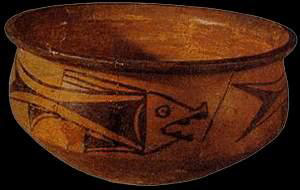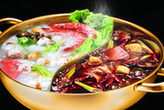Created by the industrious Chinese nation on its homeland thousands of years ago, Yangshao Culture is truly a resplendent civilization in remote antiquity.
Subsistence
The subsistence practices of Yangshao people were varied. They cultivated millet extensively; some villages also cultivated wheat or rice. The exact nature of Yangshao agriculture -- small-scale slash-and-burn cultivation versus intensive agriculture in permanent fields, is currently matter of debate. However, Middle Yangshao settlements such as Jiangzhi contain raised floor buildings that may have been used for the storage of surplus grains. They kept such animals as pigs and dogs, as well as sheep, goats, and cattle, but much of their meat came from hunting and fishing. Their stone tools were polished and highly specialized. The Yangshao people may also have practiced an early form of silkworm cultivation.

Pottery
Yangshao cordmarked amphora, Banpo phase, 4800 BCE, Shaanxi.The Yangshao culture is well-known for its painted pottery. Yangshao artisans created fine white, red, and black painted pottery with human facial, animal, and geometric designs. Unlike the later Longshan culture, the Yangshao culture did not use pottery wheels in pottery-making. Excavations found that children were buried in painted pottery jars.
Archaeological sites
The archaeological site of Banpo village, near Xi'an, is one of the best-known ditch-enclosed settlements of the Yangshao culture. Another major settlement called Jiangzhai (姜寨) was excavated out to its limits, and archaeologists found that it was completely surrounded by a ring-ditch. Both Banpo and Jiangzhai also yielded controversial incised marks on pottery which a few have interpreted as numerals or perhaps precursors to the Chinese script. However, such conclusions may be premature.
Editor:JinXin





Why not rent a boyfriend, or girlfriend to please parents during the Spring Festival?